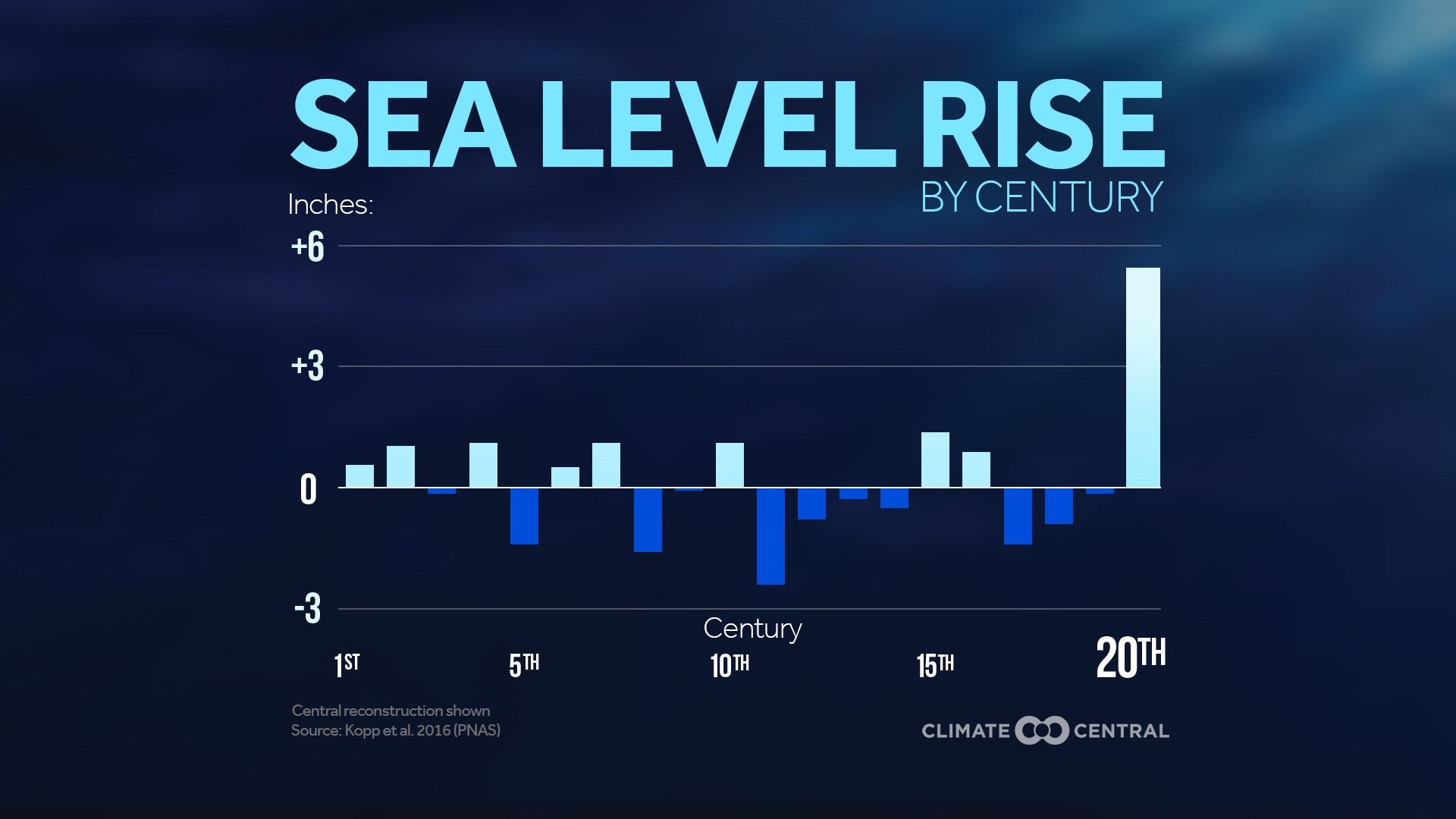Last week's nor'easter may not have brought much in the way of rain and wind, but coastal flooding was once again a big issue for many along the South Shore of Long Island and the Jersey Shore. This is a problem that seems to been getting worse and worse over the years, and signs point to that trend continuing.
I recently interviewed Sean Sublette of New Jersey-based Climate Central, an organization that provides climate data and aims to bridge the scientific community and the public. He says that coastal flooding has been getting worse, even without large storms.
"One of the things we've seen in the last two decades in particular is the amount of nuisance flooding, small scale flooding - it doesn't do a lot of damage but the repeated inundation wears down infrastructure, wears down property values as well. The number of days with that kind of flooding are substantially on the increase over the last 20 years regardless of whether or not there's any type of storm - and it is largely attributable to accelerating sea level rise."
Climate change has become quite a hot-button topic in this day and age, and many try to refute its existence by pointing out a lack of data prior to the 20th century.
Sublette points out that the numbers do in fact exist.
"There are some very good studies that look at core samples [from below the seafloor] to look at how far in advance waters have risen - not just over the past 40 or 50 years, but for the last 2000 years - and they all indicate that sea level rise in this past century is accelerating at a pace that's unprecedented in the last two millennia."

The increased number of coastal flooding instances has put homeowners close to the water on high alert whenever a storm comes nearby. It has also created more work for state and local crews. With the trends continuing to rising, it doesn't look like this situation is going to improve anytime soon.
More from News 12
1:07

Flood Middle School in Stratford closed Wednesday after bedbugs found inside
1:57

WIND ALERT: Damaging winds up to 60 mph could bring down trees, power lines tonight

RESULTS: Connecticut 2025 local election results
4:35

Conversation Connecticut: Ronnie Manning, cyber security expert
0:34

ShopRite and Wakefern pledge $1.25 million to food banks amid shutdown
0:32
